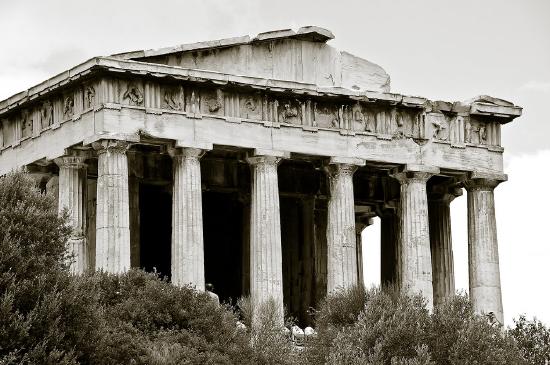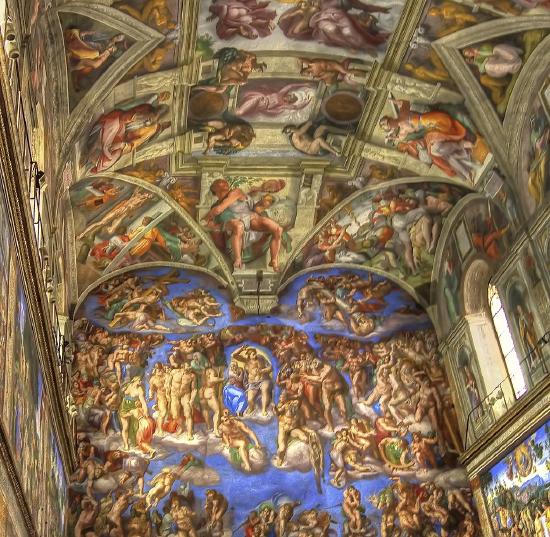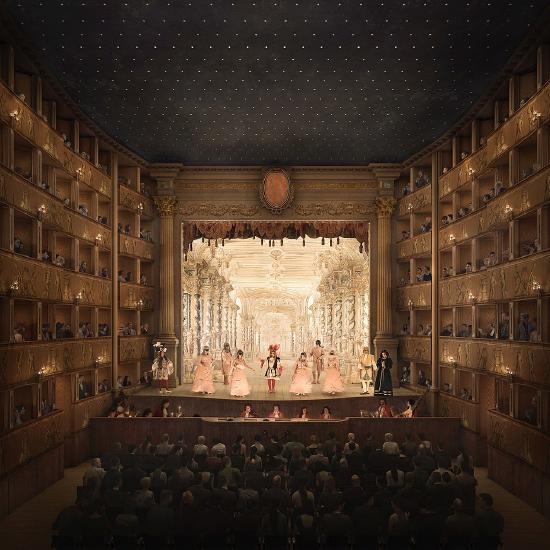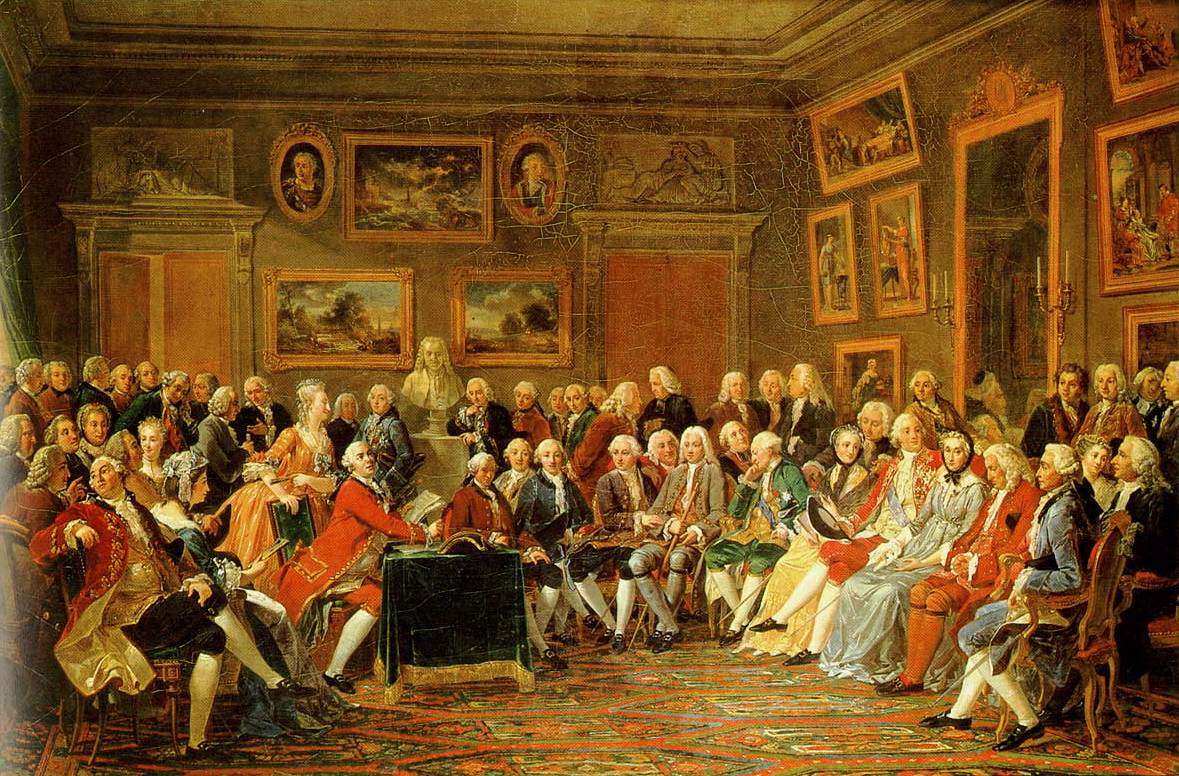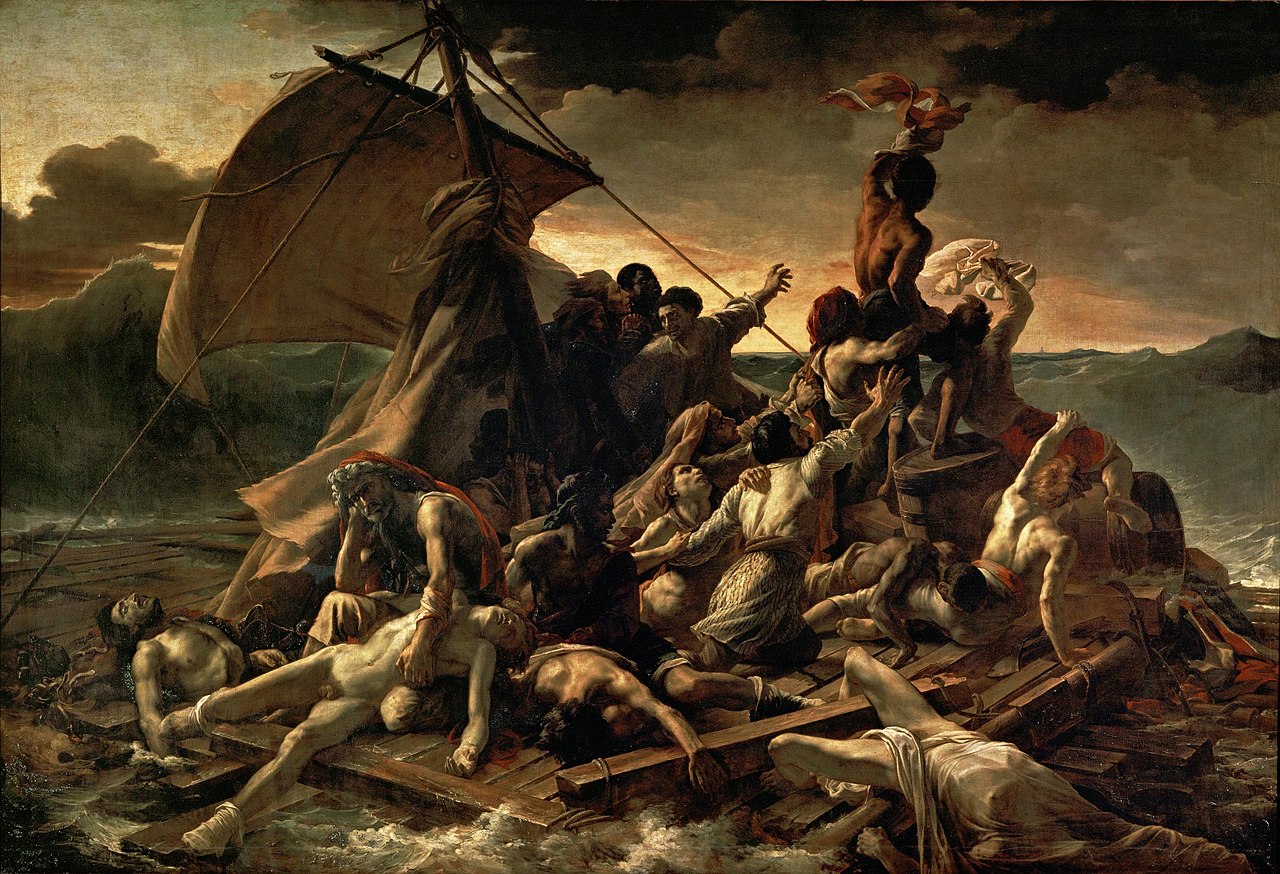1.3: A Brief Overview of Historical Time Periods
- Page ID
- 165575
The Different Time Periods in History.
As mentioned in the previous section of this text, one of the biggest problems with the traditional approach to teaching Music Appreciation has to do with the "chronological" approach to teaching the subject. However, it is important to understand the various time periods in recorded Western history. Especially because this text doesn't take a pure chronological approach, it's a good idea to familiarize yourself with the most pertinent time periods from Ancient Greece to the modern day. After learning about the elements of music and instruments, this text begins with the "Classical Era," from 1700-~1820.
The Age of Antiquity.
"Ancient Greece" by Adam Polselli is licensed under CC BY-NC-ND 2.0.
The "Age of Antiquity" refers to Ancient Greece and Ancient Rome to the Fall of the Roman Empire in 476 AD. From the same time period as Plato, Socrates, Aristotle, Homer, and the other Greek philosophers, not much music has survived from this period. Ancient philosophers wrote extensively about music and its purpose and function in society from political, religious, and vernacular perspectives, but not much actual music has survived to the present day. We will look at the oldest surviving piece the "Song of Seikilos" in the chapter on Vocal Music. Interestingly, recent music scholars have begun to focus more attention on learning more of music from this time period, seeking to give "authentic" performances of ancient music.
The Middle Ages.

"Kirchenfenster mit Hildegard von Bingen in Bad Sobernheim.jpg" by Ea17 is licensed under CC BY-SA 3.0.
The Middle Ages refers to the approximately 1000 years that covers the fall of the Roman Empire through the early 15th century. The Catholic Church dominated much of the cultural life during this time period; music that was written for the Church is called sacred music, and because of the Church's resources, much of the music that survives from the Middle Ages is sacred. This music is mostly in the Latin language, as it was the sacred language of the faith.
That is not to say that music was only written for the church -- secular music (i.e. music written for common everyday practices) also was written during this time period. Much music of the Middle Ages was vocal (i.e. sung), though instruments certainly existed. The music of this time period sounds foreign to a modern ear because of the different types of instruments that were used, as well as the way in which harmony and melody were conceived.
Music in the first half of the Middle Ages was monophonic, a term you'll come across in the next unit: this refers to music that has a single melodic line with no accompanying layers added. The rise of polyphony, which included multiple competing-yet-harmonious melodic lines begins in the early 900s AD.
The Renaissance.
"Sistine Chapel Ceiling" by vgm8383 is licensed under CC BY-NC 2.0.
This Renassiance covers approximately 1425-1600, and includes the rise of humanism, the cultural movement that explored human interests and reason, and began to move away from religious tradition and what people saw as superstition. Martin Luther's Protestant Reformation (1517) occurs during this time, which led to sacred music being sung in the vernacular language: that is, sacred music was sung in the same language as the people instead of Latin. Similar to the Middle Ages, the majority of music in the Renaissance was written for the voice, though instrumental music did exist. Much of the music in the Renaissance was polyphonic, which grew out of the latter half of the Middle Ages.
The Baroque Period.
Painting of the first public opera house, the Teatro San Cassiano (1637). Image is Fair Use under Creative Commons license CC BY-SA 4.0
The Baroque period covers the span of 1600-1750, and led to the rise of instrumental music, homophonic texture, and opera. This time period begins what is called the Common Practice Era (CPE). Beginning here, we hear music that sounds similar to what exists in the modern day. It is within this time period where we hear music with instrumental ensembles comprised of instruments that we're used to: violins, violas, cellos, basses, flutes, oboes, and trumpets. (It is important to note that these instruments were not invented during this time, but many larger ensembles were comprised of these instruments). Keyboard instruments like the organ and the harpsichord were common in this time period, both of which fell out of favor in the Classical Era (although the organ continued to flourish in church settings).
The Classical Era.
Reading of Voltaire's tragedy of the Orphan of China in the salon of Marie Thérèse Rodet Geoffrin in 1755, by Lemonnier, c. 1812. Image is in the Public Domain.
The Classical Era is a short time period, though its musical contributions are vast. Covering the years 1750-~1820, the Classical Era introduces the modern symphony orchestra, string quartet, and is where the piano becomes more widespread. Composers in this time period are very much influenced by the artistic aesthetics of Ancient Greece, which held balance and symmetry in high regard. Our first chapter covers the Classical Era, beginning with its etymological roots, addressing the similarities in Classical musical style with Ancient Greek architecture and artistic aesthetics. The majority of the most prominent composers during this time period are German or Austrian -- a trend that is challenged in the 19th century with the rise of nationalism throughout Europe.
The 19th Century (The Romantic Era).
"The Raft of the Medusa," by Théodore Géricault. Image is in the Public Domain.
The 19th century sees many mini-revolutions spring up across Europe, giving rise to the nation-state. Independent nations governed by the people instead of larger empires gave rise to Nationalism in music - that is, the pride of one's country and culture, shown through their music. Although Germany and Austria continue to produce many famous musicians, we see composers of Polish, Hungarian, French, Italian, Slovenian, and Russian composers, all seeking to create their own unique musical and cultural identity. Here, we begin to see — rather hear — differences between different cultures' music in more stark ways than before. Within this era, thanks to the Industrial Revolution, instruments become less expensive to make, which allows for more members of Middle Class to be able to afford musical instruments and training. Orchestras get bigger, and composers experiment with new ways of writing purely instrumental music. The term "Romantic" refers to an artistic trend in the 19th century that sought to express human emotions through highly lyrical melodies and expressive harmonic progressions. As you can see from the above painting, artists sought to express realistic human emotions through their works.
The 20th Century.

"Vassily Kandinsky, Bild mit rotem Fleck" by f_snarfel is licensed under CC BY-NC 2.0.
The 20th century is truly an eclectic century. Within this century, we experience rag time, Tin Pan Alley, the birth of the blues, jazz, country, modern folk music, and the birth of rock 'n roll---all during the same century as Impressionism, Modernism, Expresionism, and the Avant-garde. We also see the birth of film, television, and video games -- all of which incorporate music to some degree. Throughout this time period, our very understanding and notion of "what music is" and "what music can be" is challenged in ways never before seen in the centuries prior.
Though this seems like a lot to take in, this text introduces these periods slowly over the chapters, and when a new time period is introduced, there is a "Brief Overview" to that time period that addresses more specifics—culturally and musically—of that time period.
For students who are interested in more details, they may visit the Norman Rockwell Museums's Illustration History website.


